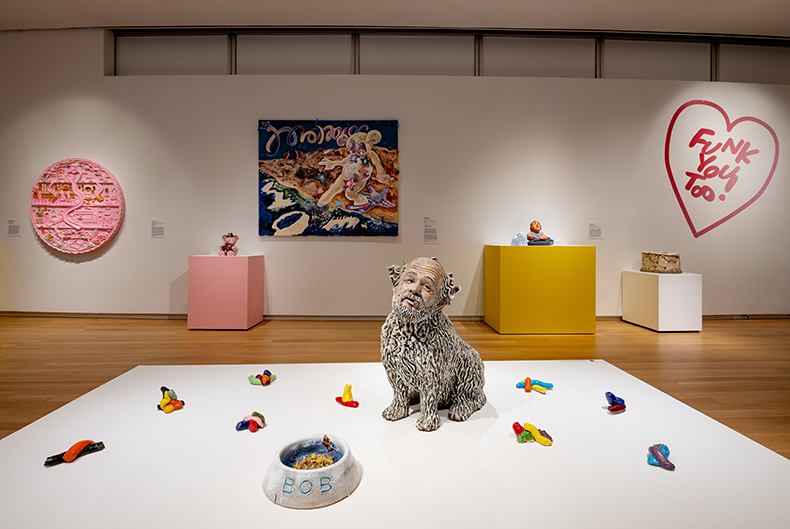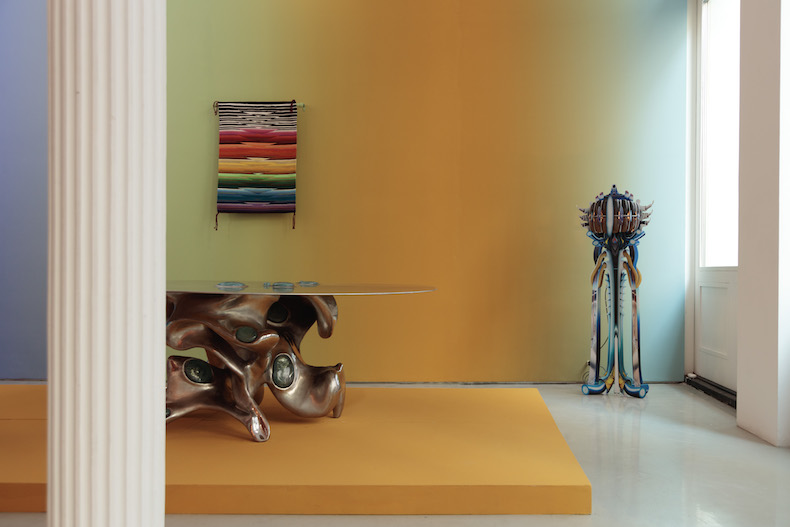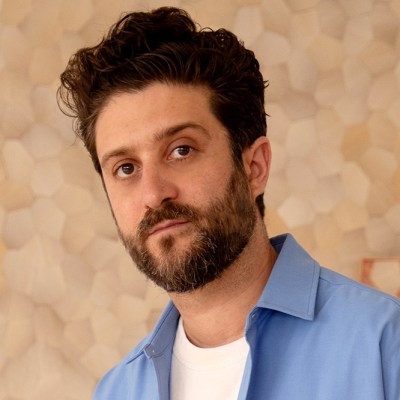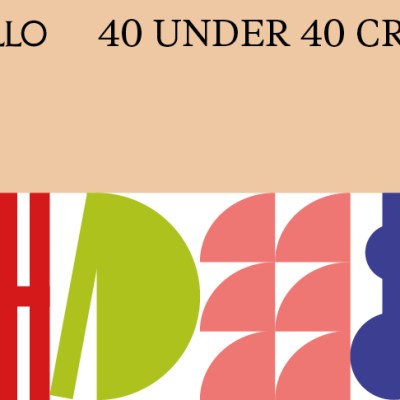New York
There is a phrase that has become synonymous with the work of the craft historian and curator Angelik Vizcarrondo-Laboy: ‘the aesthetics of cute’. Whether discussed explicitly in those terms or not, cuteness – and associated qualities such as playfulness – are apparent across her curation and writing, from the works chosen to the exhibition design. There’s a marked contrast between this ‘cuteness’ and the idea of craft many still hold as rustic, rugged and earth-toned.
This isn’t simply a preference of taste (though she does describe herself as ‘a maximalist’). ‘I’m looking at things that other people might dismiss or think are unserious,’ says Vizcarrondo-Laboy. ‘It’s about work that on the surface looks really joyful, bright, poppy, funny. But at its core, it’s saying a lot more – whether about a person, a moment in time, or sociopolitical issues.’ This approach was key to last year’s exhibition ‘Funk You Too! Humor and Irreverence in Ceramic Sculpture’ at the Museum of Arts and Design (MAD) in New York, in which Vizcarrondo-Laboy paired West Coast ‘Funk’ ceramics of the 1960s and ’70s with sculptures by contemporary artists that share a quality of cartoonish surreality and satire.
Installation view of ‘Funk You Too! Humor and Irreverence in Ceramic Sculpture’ at the Museum of Arts and Design, New York, in 2023. Photo: Jenna Bascom; courtesy Museum of Arts and Design

As she wrote in the catalogue essay, humour often ‘acts as the “spoonful of sugar” that helps the medicine go down’. ‘I put past and present together in that exhibition to denote the parallels between these two very distinct moments, but which are both moments of political stress and a lot of cultural change,’ says Vizcarrondo-Laboy. Among ceramic sculptures by artists such as Patti Warashina, Magdalena Suarez Frimkess and Woody De Othello, its highlights included Portrait of the Artist as a Clever Old Dog (1981) by Funk ceramicist Robert Arneson. This self-portrait features Arneson’s head on a canine body, surrounded by technicolour extrusions that recall both squeezes of oil paint and dog turds: an effective (if none too subtle) skewering of the self-importance of artists.
When we speak, Vizcarrondo-Laboy has just finished working on ‘Objects USA: 2024’, co-curated with Kellie Riggs for R & Company in New York (6 September–10 January 2025). The pair arranged sculptures and functional objects by 55 contemporary artists, craftspeople and designers into an idiosyncratic set of categories based on the maker’s intentions, rather than the object’s function. Their seven categories are Truthsayers, Betatester, Doomsdayers, Insiders, Mediators, Codebreakers and Keepers. They wanted to focus ‘not necessarily on what the object is, but why the object is’, says Vizcarrondo-Laboy.
Installation view of ‘Objects: USA 2024’ at R & Company, New York, with works by Misha Kahn, Venancio Aragon and Ryan Decker. Photo: Logan Jackson; courtesy R & Company

As in ‘Funk You Too!’, which she ensured was ‘bright and inviting’, filled with pops of colour, exhibition design was an important consideration: a rainbow gradient acts as an eminently Instagrammable backdrop. Such design can be read as a way to make craft more appealing to a younger generation. These choices can do much for the reach of an exhibition – increasing the degree to which it is shared online, raising awareness of its existence.
This spring, Vizcarrondo-Laboy became director of the New York City Department of Transportation’s art programme (NYC DOT Art), which presents work in public spaces across the city. ‘The scholarship of craft remains a great passion for me, but I’m committed to affecting change in the public art sphere, too,’ says Vizcarrondo-Laboy. This summer, NYC DOT Art brought craft to the streets with weaver Cynthia Alberto, who set up multicoloured looms across the city – from Staten Island to the Bronx – and invited the public to learn to weave. ‘I hope to see more artists who engage with craft making public art. I think there’s great potential.’
Passersby participating in Weaving Together by Cynthia Alberto, as part of the New York City Department of Transportation’s Summer Streets 2024 programme. Photo: courtesy NYC DOT

Alongside directing NYC DOT Art, Vizcarrondo-Laboy is continuing to curate and write, with her debut book due to be published this October and plans for another ongoing. For New Women’s Work: Reimagining “feminine” craft in contemporary art (to be published by Smith Street Books), she interviewed 38 women and non-binary artists who are ‘engaging with mediums or techniques that have historically or culturally been considered women’s work’. The subject of her next book is still undecided, but her dream is to explore ‘the historical remixes that are happening in ceramics now’, says Vizcarrondo-Laboy.
Since leaving the Bard Graduate Center with a master’s degree in Decorative Arts, Design History & Material Culture in 2016, the 32-year-old’s career has been notable not least for the sheer amount she has crammed in. Which project is she the proudest of? Vizcarrondo-Laboy cites her work on the Burke Prize at MAD, which she co-curated in 2018, 2019 and 2021, the three seasons of ‘Clay in Color’, the podcast she founded in 2021, and a catalogue essay for a recent Shinichi Sawada exhibition at The Mint and Contemporary Art Museum of St. Louis, which she describes as ‘one of the more entertaining essays I’ve done – it was really fun’. In this piece, she considers the Japanese sculptor’s enigmatic work in relation to both wabi-sabi and kawaii. In doing so, she lives up to the dictum she expressed in her 2020 essay ‘Seriously Cute: Six Artists Harnessing the Power Dichotomy of Cuteness’: ‘The next time you encounter the tender gaze of cuteness, dare to discover if there is more than meets the eye.’



